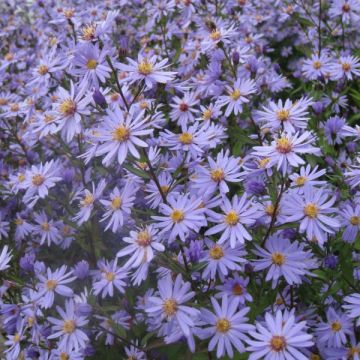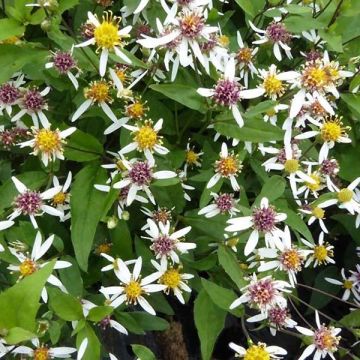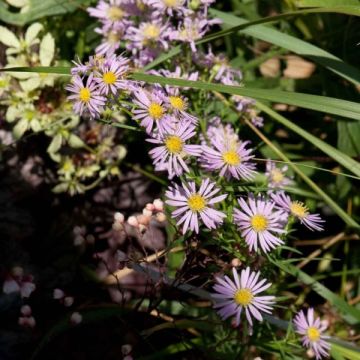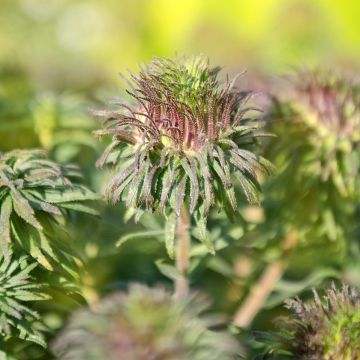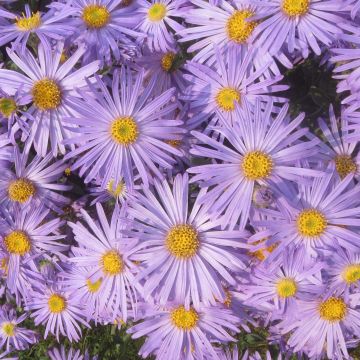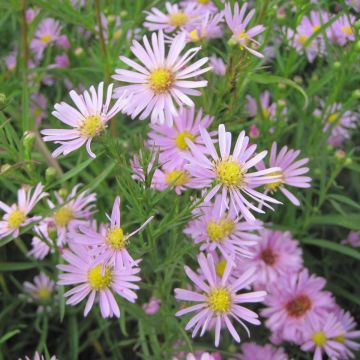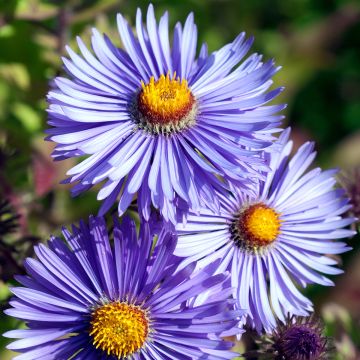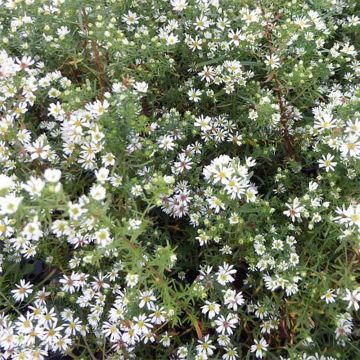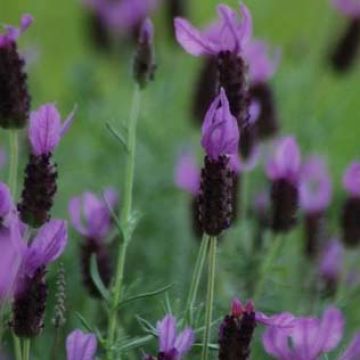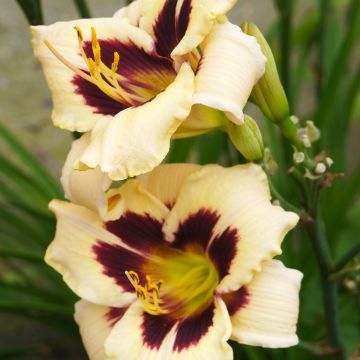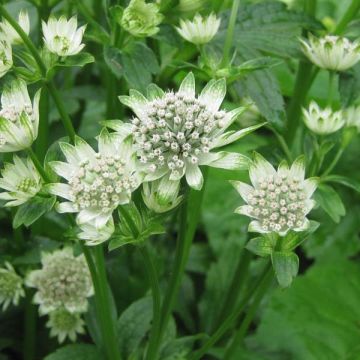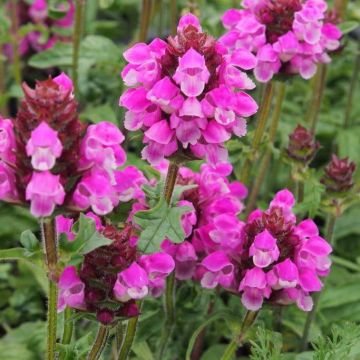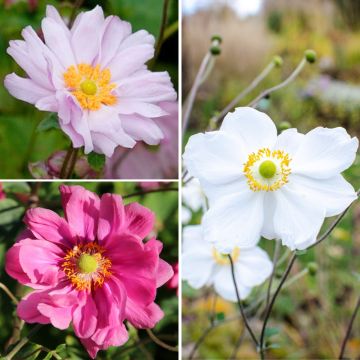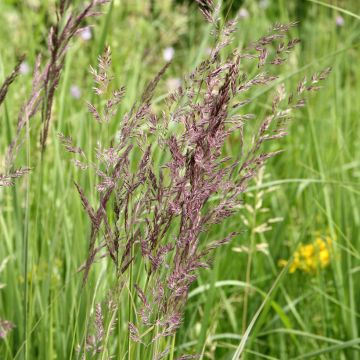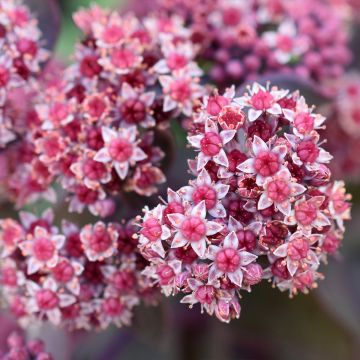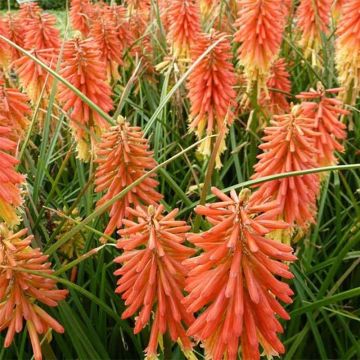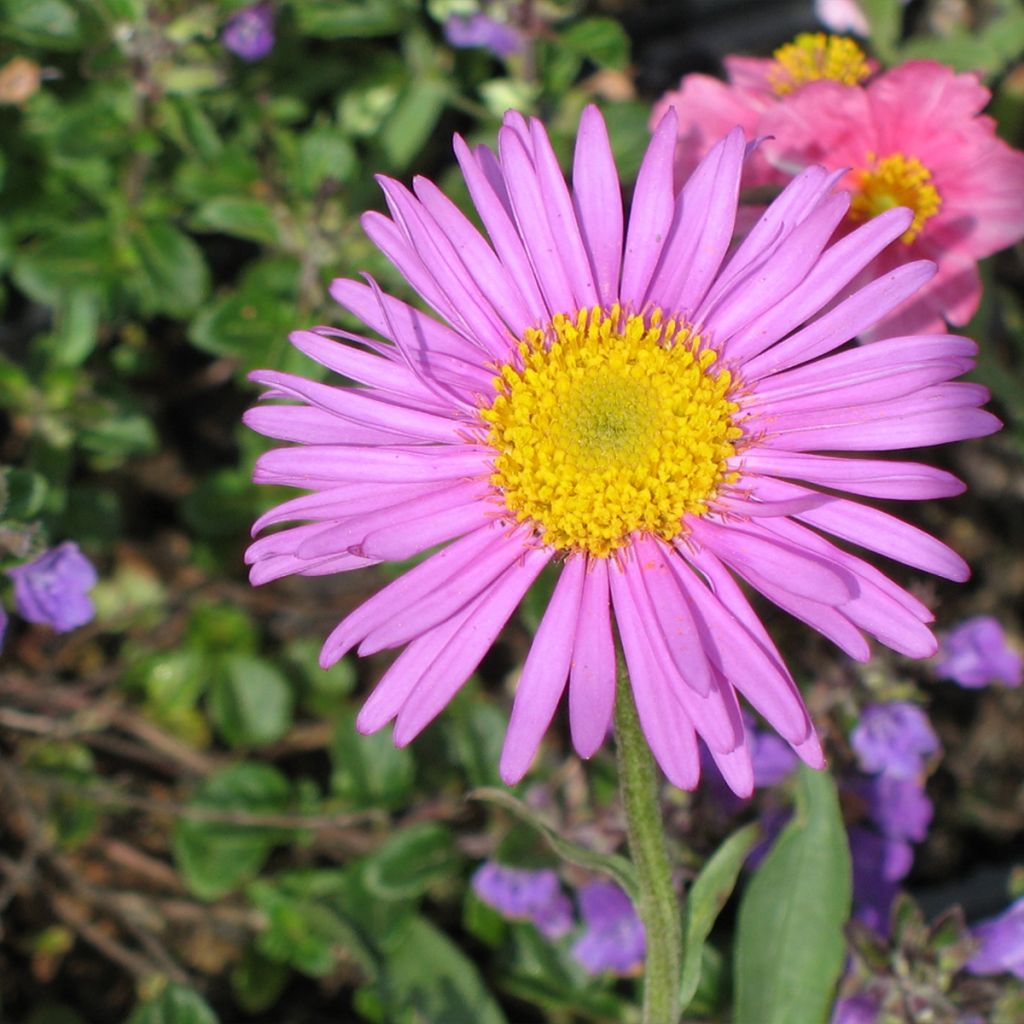

Aster alpinus Pinkie - Aster des Alpes
Aster alpinus Pinkie
Aster alpinus Pinkie
Alpine Aster, Rock Aster, Blue Alpine Daisy
Thank you to Jenny for order preparation and shipping service, the 3 young plants received are in a state of dormancy. Planted near the rose 'The Mayflower', I am now patiently waiting for their growth...(or not?).
Thierry, 26/01/2023
This item cannot be shipped to the selected country
Delivery charge from €5.90
More information
Schedule delivery date,
and select date in basket
This plant carries a 12 months recovery warranty
More information
We guarantee the quality of our plants for a full growing cycle, and will replace at our expense any plant that fails to recover under normal climatic and planting conditions.
From €5.90 for pickup delivery and €6.90 for home delivery
Express home delivery from €8.90.
Does this plant fit my garden?
Set up your Plantfit profile →
Description
Aster alpinus 'Pinkie' is a lovely selection of Alpine Aster with deep pink flowers. Aster alpinus is a small alpine species that blooms in spring or early summer, unlike the larger asters. A low-growing, woolly plant, it is a perennial grass-like plant with a woody base, forming cushion-like clumps and covered in daisy-like flowers that are relatively large considering its modest size. Fully hardy, understated, and undemanding, this little aster thrives in full sun in well-drained limestone soils and is an excellent rockery or border plant.
Aster alpinus belongs to the Asteraceae family. Its origin is in the Alps, where it grows in middle mountain stages, among rocks and meadows. The 'Pinkie' variety is a horticultural selection with bold pink flowers. The plant has a spreading tufted habit, forming dense and compact mats. It will not exceed 20 to 25cm (8 to 10in) in height when flowering and will spread at least 20cm (8in). Its growth rate is quite slow, and the lifespan of the plant will be shorter in rich and poorly drained soil. Flowering occurs from April to June-July depending on the region, and it lasts about a month. The inflorescence is a solitary head, measuring 4 to 5cm (2in) in width, with outer ligulate flowers in a deep pink colour. The central flowers (the heart) are a golden yellow. This aster is a deciduous to semi-evergreen perennial depending on the climate. The leaves, pubescent at the base of hairy stems, are rough on both sides, generally entire, elongated, lanceolate, and dark green. They are sessile (without petiole) and acute. The fruit is an achene topped with a bristly, dull white and greyish bristle, twice as long as the achene. This plant spreads through underground woody stems.
In nature, it is found in warm and limestone-rich middle-altitude stations, in meadows, clearings, forest edges, slopes, and roadsides. Use this as inspiration for the garden, by planting 'Pinkie' in sunny rockeries, alongside other dwarf asters ('Blue Beauty', 'Albus', 'Goliath'), Scabiosa columbaria 'Pink Mist', or Sedum 'Red Cauli', for example. It is also perfect for creating a transition between perennial borders and pathways, or the top of walls. And of course, it is ideal in rock gardens or alpine troughs, or even in pots.
Report an error about the product description
Flowering
Foliage
Plant habit
Botanical data
Aster
alpinus
Pinkie
Asteraceae
Alpine Aster, Rock Aster, Blue Alpine Daisy
Cultivar or hybrid
Other Asters
Planting and care
Plant Aster alpinus 'Pinkie' in autumn or spring in light, slightly acidic, neutral or even chalky, rocky or stony, well-drained soil, that is occasionally dry. It appreciates a very sunny exposure. In a mass planting, respect a spacing of at least 25cm (10in) between plants. Once planted, do not move it as it does not appreciate changes. Aster alpinus are not sensitive to powdery mildew. This aster sometimes naturalises itself, by self-sowing in gravel or between stones, with the seedlings not always producing identical plants. Fully hardy, these plants require little maintenance.
Planting period
Intended location
Care
-
, onOrder confirmed
Reply from on Promesse de fleurs
Summer flowering perennials
Haven't found what you were looking for?
Hardiness is the lowest winter temperature a plant can endure without suffering serious damage or even dying. However, hardiness is affected by location (a sheltered area, such as a patio), protection (winter cover) and soil type (hardiness is improved by well-drained soil).

Photo Sharing Terms & Conditions
In order to encourage gardeners to interact and share their experiences, Promesse de fleurs offers various media enabling content to be uploaded onto its Site - in particular via the ‘Photo sharing’ module.
The User agrees to refrain from:
- Posting any content that is illegal, prejudicial, insulting, racist, inciteful to hatred, revisionist, contrary to public decency, that infringes on privacy or on the privacy rights of third parties, in particular the publicity rights of persons and goods, intellectual property rights, or the right to privacy.
- Submitting content on behalf of a third party;
- Impersonate the identity of a third party and/or publish any personal information about a third party;
In general, the User undertakes to refrain from any unethical behaviour.
All Content (in particular text, comments, files, images, photos, videos, creative works, etc.), which may be subject to property or intellectual property rights, image or other private rights, shall remain the property of the User, subject to the limited rights granted by the terms of the licence granted by Promesse de fleurs as stated below. Users are at liberty to publish or not to publish such Content on the Site, notably via the ‘Photo Sharing’ facility, and accept that this Content shall be made public and freely accessible, notably on the Internet.
Users further acknowledge, undertake to have ,and guarantee that they hold all necessary rights and permissions to publish such material on the Site, in particular with regard to the legislation in force pertaining to any privacy, property, intellectual property, image, or contractual rights, or rights of any other nature. By publishing such Content on the Site, Users acknowledge accepting full liability as publishers of the Content within the meaning of the law, and grant Promesse de fleurs, free of charge, an inclusive, worldwide licence for the said Content for the entire duration of its publication, including all reproduction, representation, up/downloading, displaying, performing, transmission, and storage rights.
Users also grant permission for their name to be linked to the Content and accept that this link may not always be made available.
By engaging in posting material, Users consent to their Content becoming automatically accessible on the Internet, in particular on other sites and/or blogs and/or web pages of the Promesse de fleurs site, including in particular social pages and the Promesse de fleurs catalogue.
Users may secure the removal of entrusted content free of charge by issuing a simple request via our contact form.
The flowering period indicated on our website applies to countries and regions located in USDA zone 8 (France, the United Kingdom, Ireland, the Netherlands, etc.)
It will vary according to where you live:
- In zones 9 to 10 (Italy, Spain, Greece, etc.), flowering will occur about 2 to 4 weeks earlier.
- In zones 6 to 7 (Germany, Poland, Slovenia, and lower mountainous regions), flowering will be delayed by 2 to 3 weeks.
- In zone 5 (Central Europe, Scandinavia), blooming will be delayed by 3 to 5 weeks.
In temperate climates, pruning of spring-flowering shrubs (forsythia, spireas, etc.) should be done just after flowering.
Pruning of summer-flowering shrubs (Indian Lilac, Perovskia, etc.) can be done in winter or spring.
In cold regions as well as with frost-sensitive plants, avoid pruning too early when severe frosts may still occur.
The planting period indicated on our website applies to countries and regions located in USDA zone 8 (France, United Kingdom, Ireland, Netherlands).
It will vary according to where you live:
- In Mediterranean zones (Marseille, Madrid, Milan, etc.), autumn and winter are the best planting periods.
- In continental zones (Strasbourg, Munich, Vienna, etc.), delay planting by 2 to 3 weeks in spring and bring it forward by 2 to 4 weeks in autumn.
- In mountainous regions (the Alps, Pyrenees, Carpathians, etc.), it is best to plant in late spring (May-June) or late summer (August-September).
The harvesting period indicated on our website applies to countries and regions in USDA zone 8 (France, England, Ireland, the Netherlands).
In colder areas (Scandinavia, Poland, Austria...) fruit and vegetable harvests are likely to be delayed by 3-4 weeks.
In warmer areas (Italy, Spain, Greece, etc.), harvesting will probably take place earlier, depending on weather conditions.
The sowing periods indicated on our website apply to countries and regions within USDA Zone 8 (France, UK, Ireland, Netherlands).
In colder areas (Scandinavia, Poland, Austria...), delay any outdoor sowing by 3-4 weeks, or sow under glass.
In warmer climes (Italy, Spain, Greece, etc.), bring outdoor sowing forward by a few weeks.

































